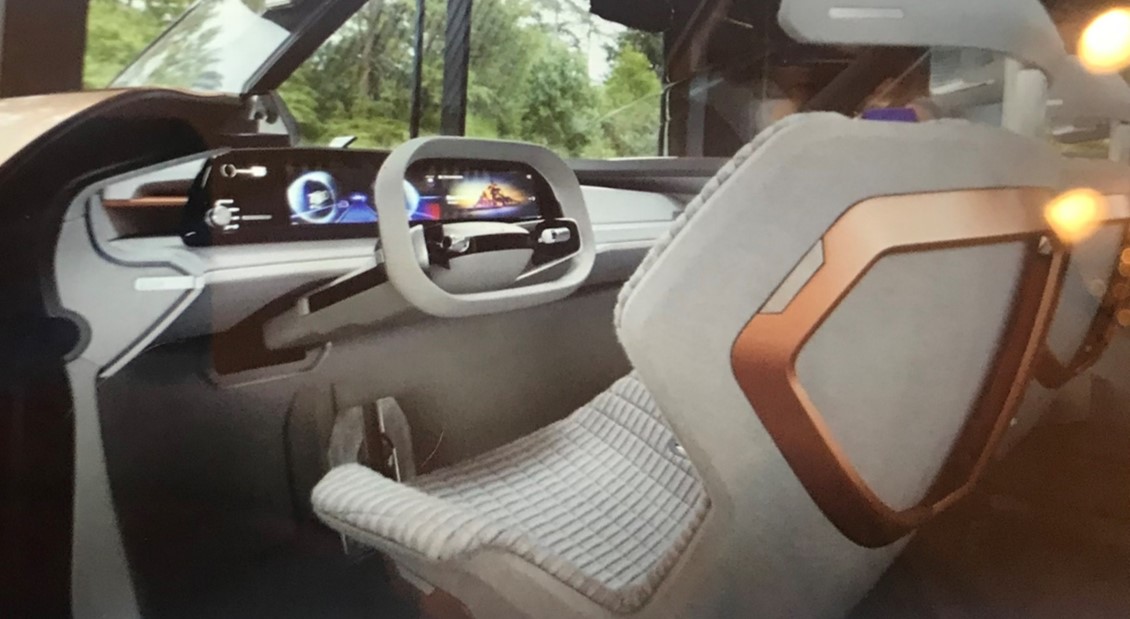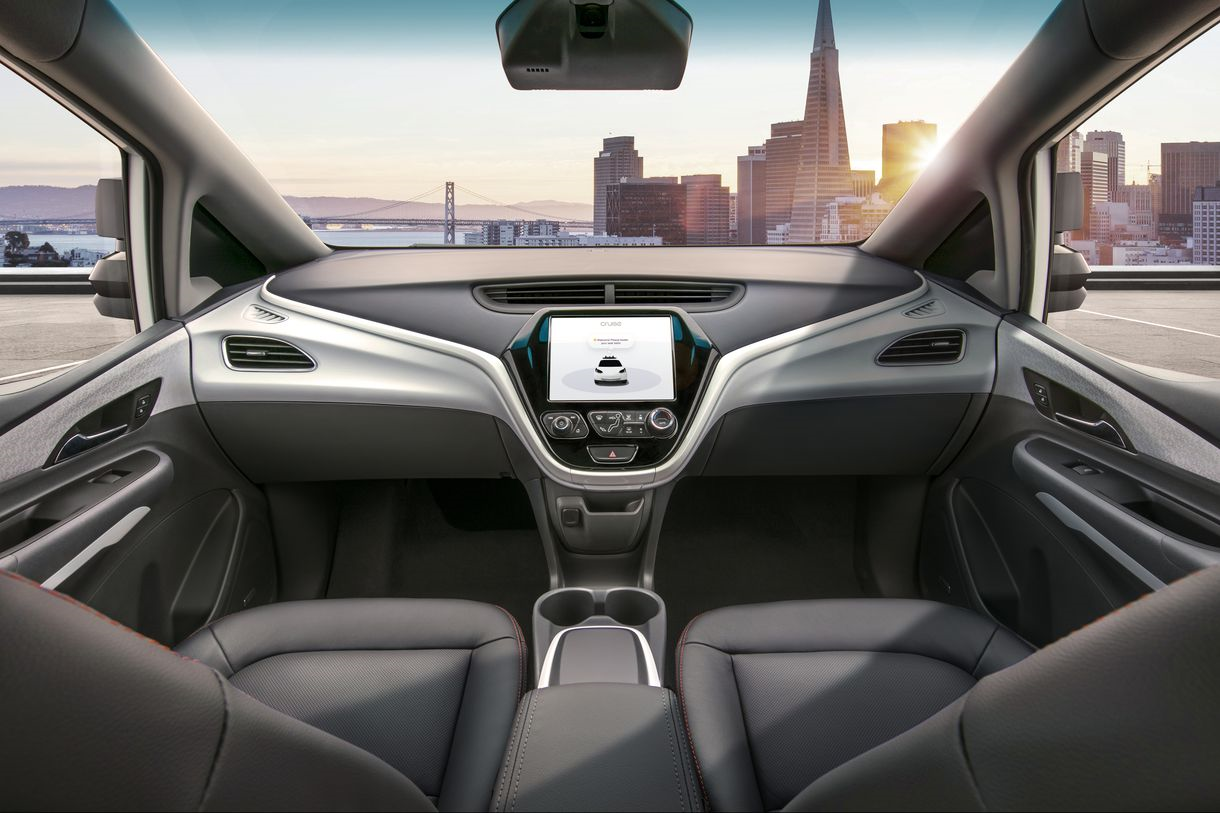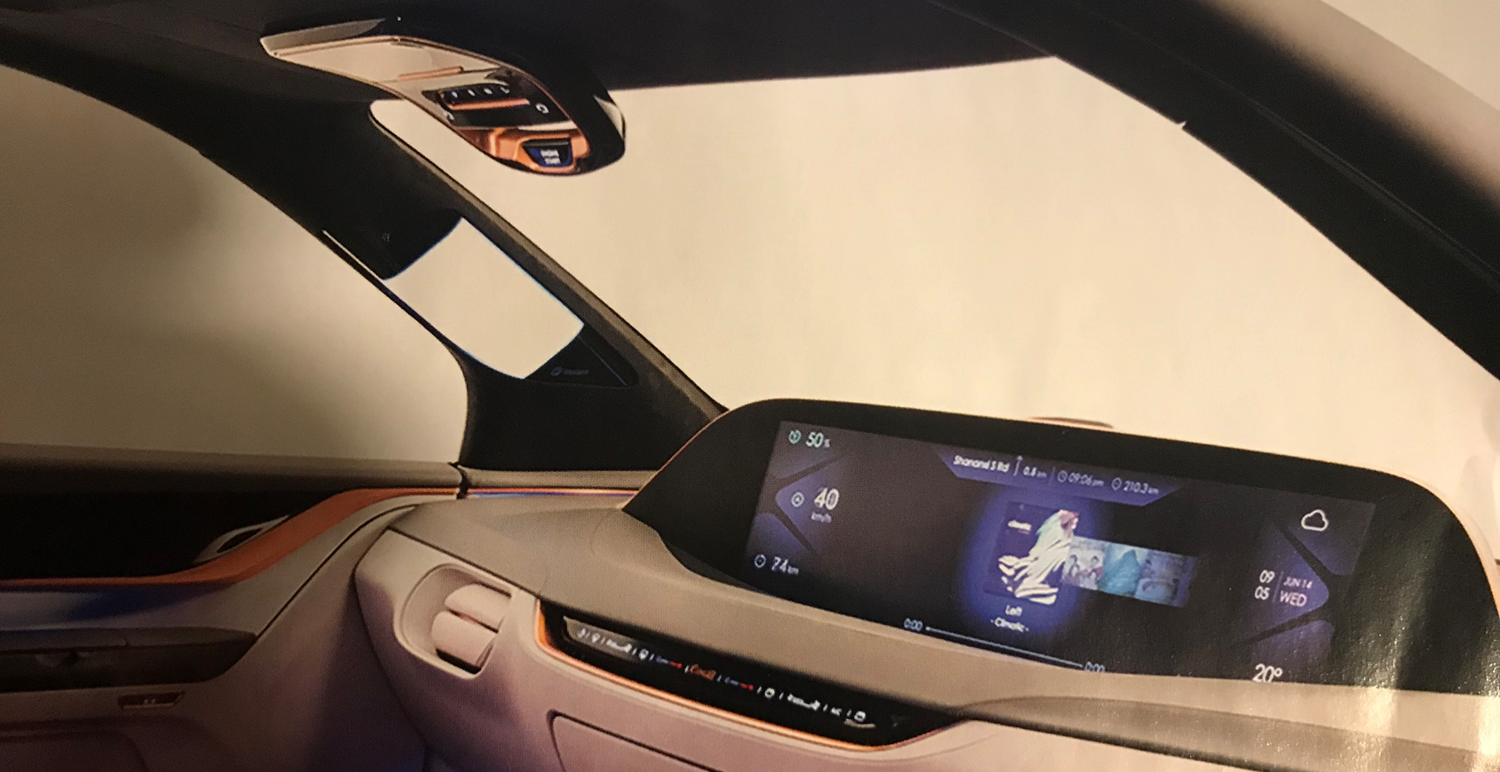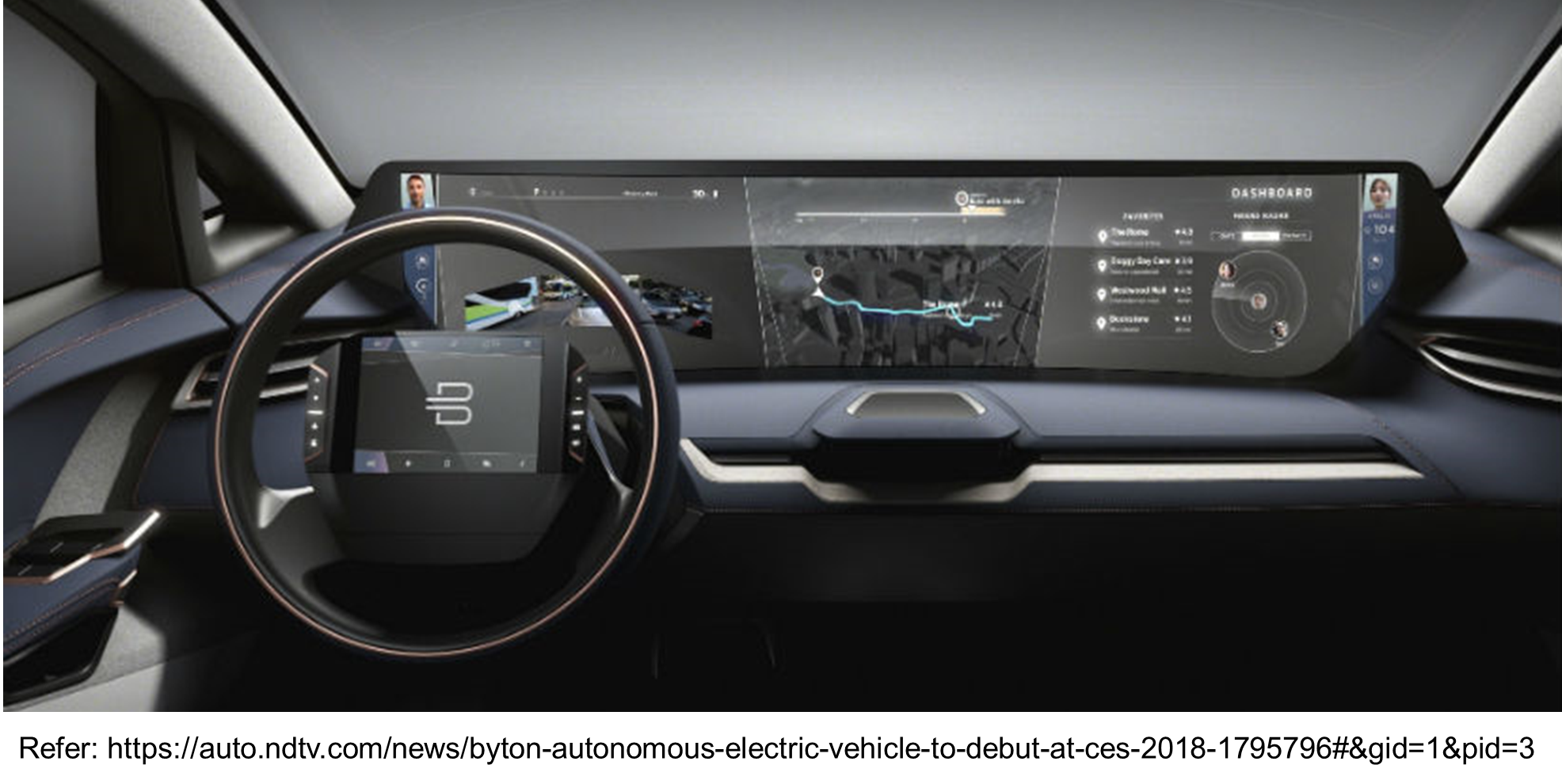Scan Analytics captures every step potentially inside autonomous vehicles over time. It helps transform in car physical spaces into smart and interactive environment.
The advanced high-resolution analysis of the car floor mat provides data that could help vehicle architecture analyze passenger entry / exit and even identify the person. It will capture, and track entrances/exits, measure engagement in public autonomous vehicles, activate digital/ambient automations and other measurements.
In autonomous taxi cabs it can monitor customer entry and exit.
All OE’s are working on next generation Autonomous Vehicle interiors. For example, Jaguar is setting out a vision of a smart steering wheel as shown.
A new comer UNITI EV boasts largest and most advanced interactive HUD and almost all interaction points have been digitized like a smartphone. It also has steer-by- wire system electronic steering system. Refer https://www.uniti.earth/.
According to BMW they are not planning on removing steering wheels or pedals from the cars at for now. Of course, it is impossible to predict in the fast developments in interior designs of autonomous vehicles it is good to know that for the future BMW will continue to offer the fun of driving even on Level 5 autonomous cars.
GM on the other hand is planning to make an autonomous car without steering wheel or pedals by 2019.
Yanfeng Interiors XiM18 shows off autonomous interior for the future was shown at the Frankfurt show.
Byton’s most obvious difference from this and a traditional car is the huge screen that spans the entire top of the dashboard, which the company refers to as the “Shared Experience Display.” It has a gesture control interface, so any passenger can operate the shared display. Steering wheel also has its own separate screen.
Faurecia Smart IP shown here looks beautiful. The technology challenge is to integrate the smart touch input shown here into one 3D PC or PC ABS Class A. Eliminate separate PCBS or even control electronics – all to be integrated into the B side of the Touch Input and develop it as plug & play concept.
The other core deliverable is to make the signal wireless where maximum only b+ and GND input is needed but no pigtail or wire harness connectivity. Electrical interface for power to be either wireless or through Pogo Pin terminal connectivity.
Group Renault’s proposed design shown below is another autonomous vehicle concept where the steering wheel can be completely retracted.
The item to note here that the bracket design on rear of front seat can be make a smart  bracket to incorporate display into the seat rear based on customer want.
bracket to incorporate display into the seat rear based on customer want.
For more innovation and technology information with business case contact designhmi@gmail.com
Technology Innovations for Potential Autonomous Vehicle Application
This is a brief write up on few technologies that can help in design of autonomous vehicles. The Power Board design below can be modified for retractable running board for Autonomous SUV’s for easy entry and exit.
OLED for Potential Integration into Seat Fabrics:
Research team led by Professor Kyung Cheol Choi at the School of Electrical Engineering presented  wearable displays for various applications including fashion, IT, and healthcare. Integrating OLED (organic light-emitting diode) into fabrics, the team developed the most highly flexible and reliable technology for wearable displays in the world – refer https://www.eurekalert.org/pub_releases/2017-08/tkai-tme082417.php. You can also contact KOLON Glotech, INC. for more information.
wearable displays for various applications including fashion, IT, and healthcare. Integrating OLED (organic light-emitting diode) into fabrics, the team developed the most highly flexible and reliable technology for wearable displays in the world – refer https://www.eurekalert.org/pub_releases/2017-08/tkai-tme082417.php. You can also contact KOLON Glotech, INC. for more information.
Also read article in April 2018 Photonics Magazine as below:
“Engineers are creating ultrathin or stretchable films with embedded electronic and photonic components, for example, or directly fabricating displays on top of textiles using inorganic and organic LEDs and polymer light-emitting electrochemical cells (PLECs). Target is to have LED fibers that could be woven into knitted fabrics, allowing display functions to be integrated directly into wearables that retain woven clothing’s advantages, such as flexibility, breathability and comfort.
The KAIST team, seeking to build an OLED fiber with strong enough performance for wearable displays, and with a sustainable, low-temperature manufacturing process, began with a fiber substrate made of polyethylene terephthalate (PET), a common, widely used material for plastic fibers.
When they applied a 7-volt bias to the fiber, the KAIST scientists found that the material exhibited  luminance values of more than 10,000 cd/m2 and efficiencies on the order of 11 cd/A. They were able to create working OLED fibers with diameters ranging from 90 to 300 microns. And they demonstrated that the fibers could be hand-woven into actual knitted garments.”
luminance values of more than 10,000 cd/m2 and efficiencies on the order of 11 cd/A. They were able to create working OLED fibers with diameters ranging from 90 to 300 microns. And they demonstrated that the fibers could be hand-woven into actual knitted garments.”
A fiber‐based polymer light‐emitting diode (PLED) is demonstrated using dip coating, which is widely used in the textile industry. The fiber PLED shows high luminance (>1000 cd m−2) and low operating voltages (<10 V) and is safely integrated into electronic textiles. This solution process allows for low‐cost mass production by roll‐to‐roll manufacturing.
Refer https://onlinelibrary.wiley.com/doi/full/10.1002/aelm.201500103
Autonomous Vehicle controllers for seats / captain’s chair which can also translate to rear passenger seats.
The Industrial designs are endless as can be viewed on Pinterest, Yanko Design and others. Unfortunately, application of innovative industrial designs in vehicles is very poor – other that at Auto Show or other displays. Effort to integrate these into product must be stronger. Believe with the global growth in auto companies there will be increased pressure on OE to integrate designs and technology into production within a 2-year time line as opposed to 6+ years today.
CARLING compliant with SAE J1939 CAN standards, the CKP-Series is a customizable keypad featuring laser etched legends and up to three dimmable LED function lights per button, which also offer diagnostic feedback by blinking if there is a fault.
Sealed to an IP69 protection level, the CKP-Series can be installed inside or outside the cab making it ideal for any on/off-highway application. Its low-profile design affords a seamless dashboard look and can be mounted either vertically or horizontally.
The CKP-Series offers significant advantages over traditional electromechanical switches such as 1,000,000 actuation cycles, reduced wire harnessing, and easy installation.
Product Highlights:
- SAE J1939 CAN 2.0b Protocol
- IP69 Front Panel Sealing Protection
- Up to 3 LED Function Lights Per Button
- Diagnostic Feedback
- Standard or Custom Laser Etched Legends
- 1,000,000+ Button Actuation Cycles
- Low Current Switching
- 8 to 32V Operating Voltage
- Tactile and Audible Feedback
Smart / iPhone Docking Station: Simple adjustment process allows you to use your favorite iPhone case with the BEVL Dock, ensuring a precise fit with no wiggling or wobbling. With the included setup tool, adjustment takes less than a minute – refer https://bevl.co/.
Collapsible wireless charging module concept for Armrest. Design can be updated to add retention features that allow you to place smart phone at 60D, so you can view while it is charging.























